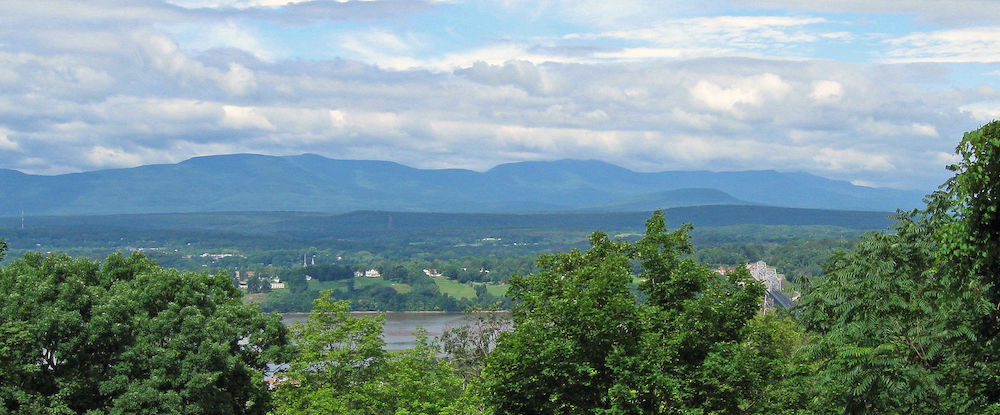Heritage meets headcount: The Borscht Belt shaped American leisure—now there’s a museum that brings it to life—and nearby hotels—can host up to 800
Long before beachfront mega-resorts and bucket-list travel, summer in the Northeast meant “going up to the mountains.” In the Catskills, parallel resort cultures blossomed: Jewish families built the now-legendary Borscht Belt; Irish immigrants flocked to the “Irish Alps”; Italian Americans created their own retreats; and Black travelers found welcome at rare, proudly Black-owned properties. Together, they democratized time off, standardized the idea of the all-inclusive week away, and created a training ground for American entertainers—from punchline machines to crooners—who would define 20th-century popular culture.
The Borscht Belt: Where “Going Away” Became A Way Of Life
In the 1920s–60s, Jewish entrepreneurs, often shut out elsewhere, built an entire vacation economy of hotels, bungalow colonies, and camps that could host hundreds of thousands each summer. The result wasn’t just beds and buffets; it was a community ritual—swim lessons by day, orchestras and comics by night—that set the template for modern leisure travel and destination entertainment. The circuit became such a cultural force that it was routinely uttered in the same breath as Broadway and Las Vegas.
Crucially, the Borscht Belt was also a factory for talent. Resorts like Grossinger’s, Kutsher’s, Brown’s, the Concord, and the Nevele gave comedians and headliners nightly stage time to hone acts in front of the toughest audiences in America. A who’s-who—Sid Caesar, Henny Youngman, Joan Rivers, Jackie Mason, Jerry Lewis, and (later) Jerry Seinfeld—either started or sharpened their craft “in the mountains.”
The Irish Alps: Boarding Houses, Show bands, and A Homespun Welcome
To the north in Greene County, East Durham and neighboring hamlets evolved into the “Irish Alps”—a landscape of boarding houses and small hotels originally German-owned, later run by Irish families catering to urban workers hungry for fresh air, céilí dancing, and familiar accents. At mid-century, these venues thrived with family-style meals, barn dances, and weekend bands—proof that the Catskills model adapted to different communities while keeping the same promise: inclusive fun at a price point regular families could reach.
Italian American Retreats: From Boarding Houses to Big-Room Resorts
Italian American guests built their own vacation pathways as well, most famously at Villa Roma in Sullivan County. What began in the 1940s as a modest, Italian-owned boarding house grew into a year-round resort with bocce, big rooms, and a social calendar that blended little-Italy conviviality with Catskills scale—evidence that ethnic resorts weren’t silos; they were parallel tracks in a shared regional hospitality story.
Black Leisure in the Catskills: Peg Leg Bates and A Vital Safe Harbor
In an era when many mainstream hotels still practiced discrimination, the Catskills also hosted one of the country’s most important Black-owned resorts. Tap legend Clayton “Peg Leg” Bates opened his Kerhonkson country club in the 1950s; it grew into what was widely described as the largest Black-owned and -operated vacation property of its time, presenting jazz, dance, and social weekends for Black vacationers who had too few options elsewhere.
Belonging in the Mountains: Casa Susanna’s Quiet Revolution
Part of the LGBTQ+ community also carved out a sanctuary here—most famously at Casa Susanna, a discreet bungalow camp in Jewett, NY, where in the late 1950s–early 1960s cross-dressing men and transgender women could gather for a weekend of total ease at a time when public cross-dressing was criminalized in much of the U.S.; run by Susanna (Tito) Valenti and her wife Maria, the property offered meals, makeup lessons, and even in-house photography so guests didn’t risk outside developers, and its rediscovered photo archive later inspired a book, a Tony-nominated play (Casa Valentina), and a documentary—proof that the mountains weren’t just a getaway, but a rare space of belonging.
A Pipeline to The Big Time
The region wasn’t only about laughs; it was an all-genre talent incubator. Summer theaters like the Forestburgh Playhouse (founded 1947) kept repertory and musical theater humming, while Catskills stages welcomed big-name singers and bandleaders on weekend bills. Some resorts even doubled as athletic training camps—Kutsher’s and Grossinger’s hosted boxing greats from Archie Moore to Rocky Marciano and Floyd Patterson—turning “the mountains” into a surprisingly complete, year-round entertainment campus.
Bringing the Past to Life: The Borscht Belt Museum
Housed in a 1928 Neo-Georgian former bank that once financed local hoteliers, the Borscht Belt Museum is a ready-made offsite with substance. The building itself tells a story of grit and upward mobility—perfect context for a keynote about resilience in hospitality. Inside, the curatorial lens mixes nostalgia with interactivity so teams don’t just learn the history; they inhabit it.
What Planners Can Program On-Site
Signature exhibition: And Such Small Portions! Food and Comedy in the Catskills Resort Era—an energetic walk-through of menus, jokes, dining-room theatrics, and the emcees who kept the show (and the soup) moving. Great for a guided tour followed by a deli-inspired break.
Immersive set pieces: A recreated 1960s bungalow kitchen and a 1970s Kutsher’s hotel room staged in the building’s bank vault—instant conversation starters and photo ops that translate beautifully into team icebreakers or content for internal comms.
Memory capture & storytelling: The museum’s pop-up/opening activations have included stations for guests to record “I remember…” stories—easy to adapt into a brief team storytelling exercise about service moments and belonging.
Why It Resonates with Diverse Groups
Because the Catskills were never one story. The museum anchors the Jewish Catskills narrative while opening the door to parallel histories—the Irish Alps, Italian boarding-house culture, Black leisure at Peg Leg Bates and the refuge the LBGTQ community found at Casa Susanna—so many of your attendees will see themselves in the arc of American vacationing and hospitality. It’s a conversation about access, welcome, and the social power of time off—still relevant to every brand with a people strategy.
How To Make It Happen
Though it feels a world away from Midtown, the 30-minute radius around the Borscht Belt Museum—including Resorts World Catskills—offers roughly 857 guest rooms and at least 125,000 sq. ft. of combined meeting space, enough to comfortably host meetings and retreats for up to 800 attendees.
For lodging and meeting “home bases” within 30 minutes of the museum, use Resorts World Catskills as your scalable anchor for plenaries and larger meal functions, then layer in Honor’s Haven Retreat & Conference five minutes from the museum for breakouts, wellness blocks, and lakeside receptions; reserve design-forward suites at INNESS and estate-style Hasbrouck House for VIPs, board sessions, or creative labs; and, if you want family-friendly add-ons or a playful offsite vibe, tap The Kartrite Resort nearby—keeping Stonehill’s Farmhouse and The Outlier Inn in your pocket for micro-retreats, buyouts, or off-grid workshops.
Any thoughts, opinions, or news? Please share them with me at vince@meetingsevents.com.
Photo by Ed Creative Commons Attribution 2.0 Generic





